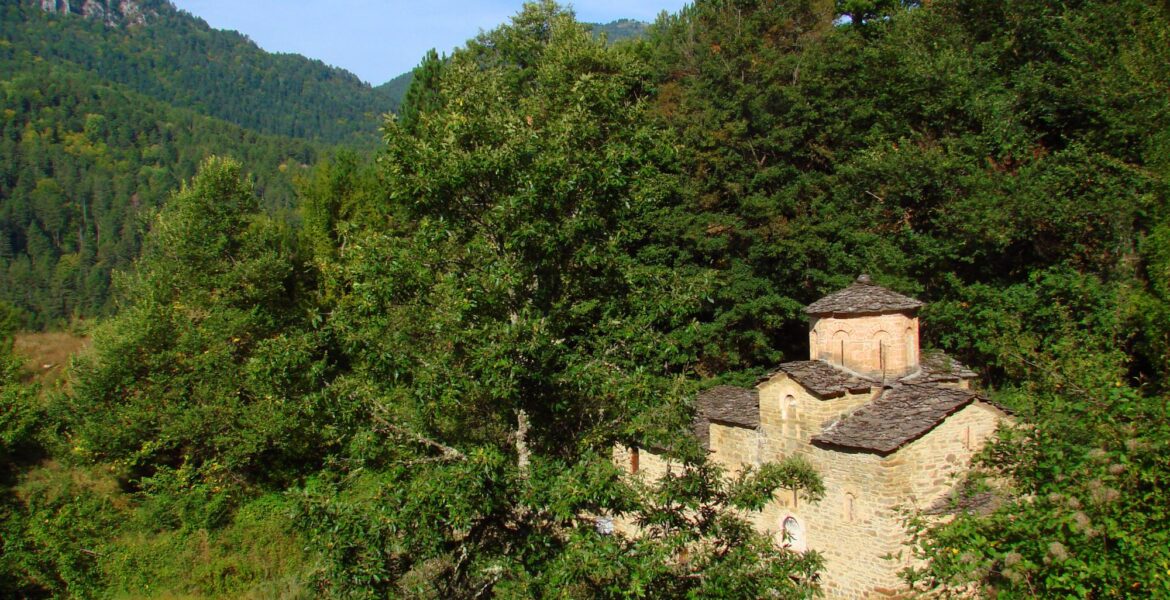Monasteries and churches are a destination of inexhaustible beauty.
One can never tire of Mount Grammos due to its untouched natural landscapes, such as rural alpine scenery thousands of metres above sea level and wild dense forests full of half-forgotten paths.
For these reasons, visitors return again and again to the mountains of Western Macedonia until they discover all the well-hidden secrets of this unspoiled corner of Greece.
The monasteries of Grammos are also forgotten remnants of history.
Agios Zacharias Monastery
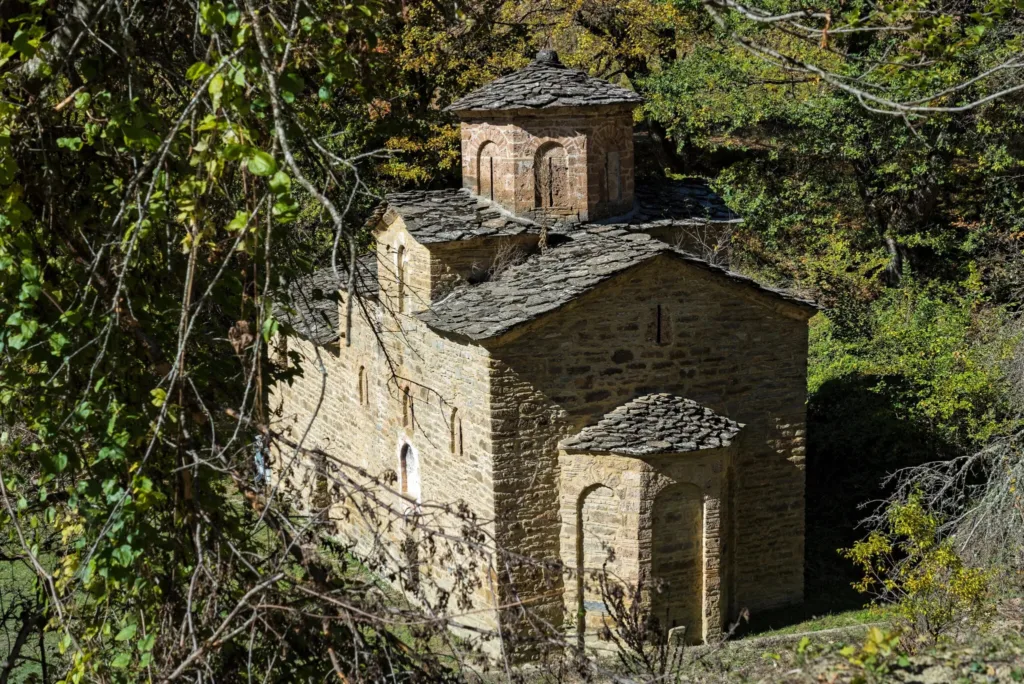
A monastery of the post-Byzantine period, built on the edge of a series of mountain meadows along the flow of the Haliacmon River, the monastery of Agios Zacharias was founded in the late 16th century in a bucolic location almost straight out of a fairy tale.
A vast mountainous landscape between the endless mountain and forest masses of Grammos surrounds the monastery, which is unknown to most of the world but has an interesting but somewhat dark history.
The constant movement of people in the Balkans did not leave the monastery unaffected. At some point in time, unknown to us today, it was turned into a mosque.
Later, it fell into disrepair and was left to the ravages of time until and after the end of the Balkan Wars, when it slowly began to come back into the limelight.
More than a hundred years later, little is known about the mysterious monastery's history, which was declared a protected monument in 1990.
Tsoukas Monastery
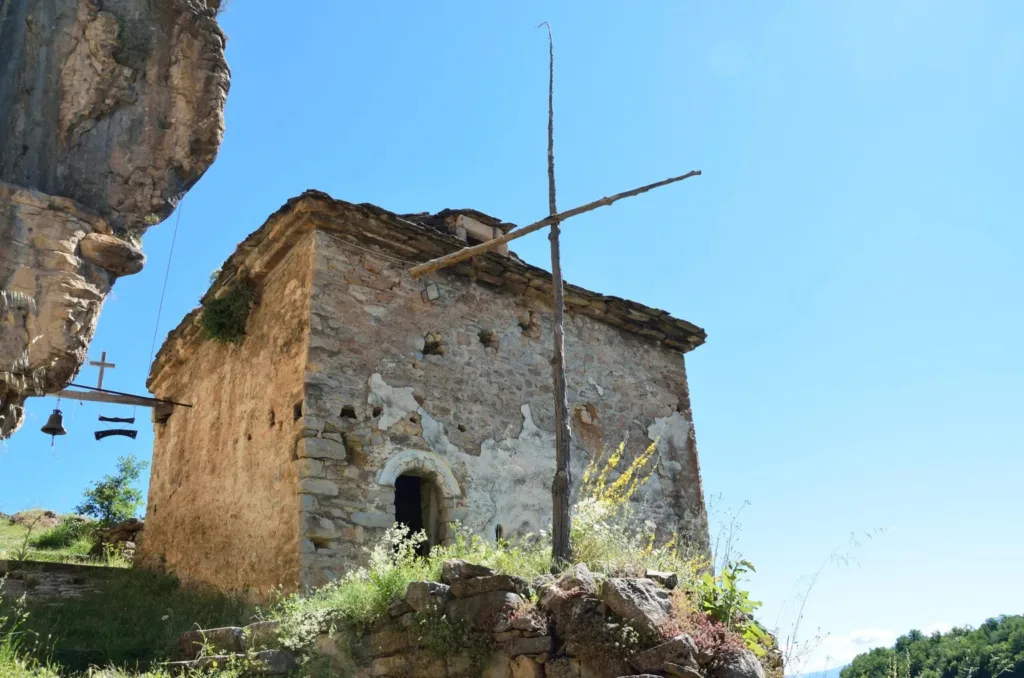
Built on a large steep rock above the tributary of Haliacmon, the Stenopotamos, the Tsoukas monastery is one of the most characteristic unknown monasteries of Grammos and was named from a nearby older, now-abandoned village.
The monastery's interior is simple and overwhelming, and it is Byzantine. It is even said that inside the church, a founding inscription from 1225 was destroyed at some point. It is worth mentioning that the area as a whole was destroyed in World War II.
However, relatively quickly, in 1961, the monastery was declared a listed building, and as a result, a large restoration process was slowly started, which was completed relatively recently.
Monastery of Agios Georgios Eptachori
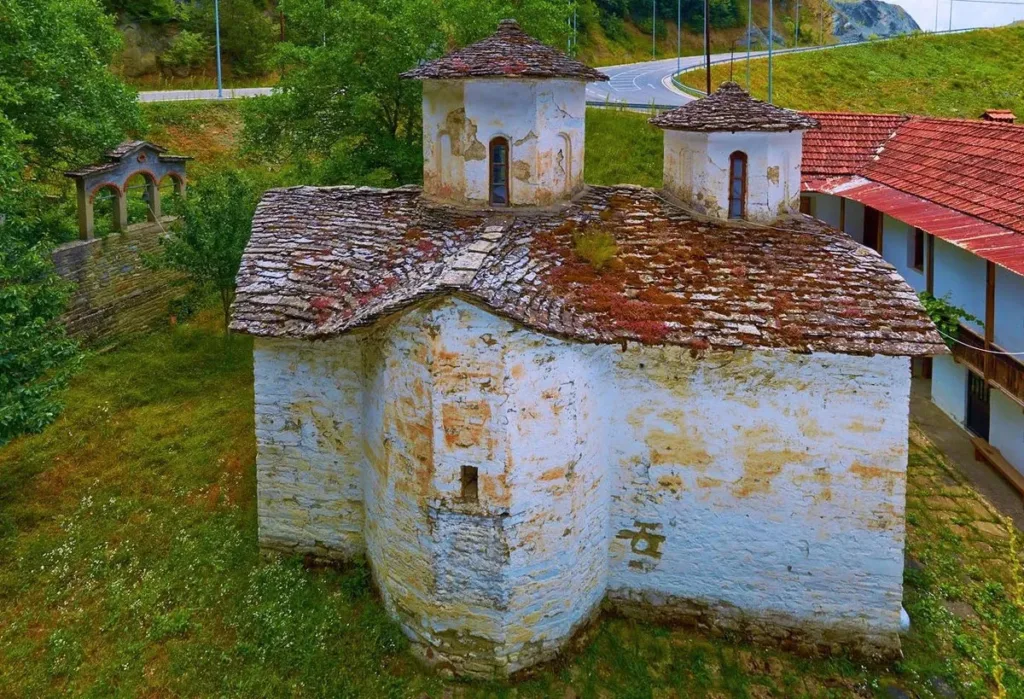
On the slopes of Taliaros, a little above Eptachori, the historic monastery of Agios Georgios, with its special illustration, dates back to its foundation in 1625.
The church has sophisticated and complex architecture. It is also full of frescoes from the post-Byzantine period, perfectly demonstrating Christian art's survival in the Balkans.
The church, together with the cemetery church a little above, has been declared a preserved monument and is worth a visit once you find yourself in this corner of Greece.
Panagia of Grammosta
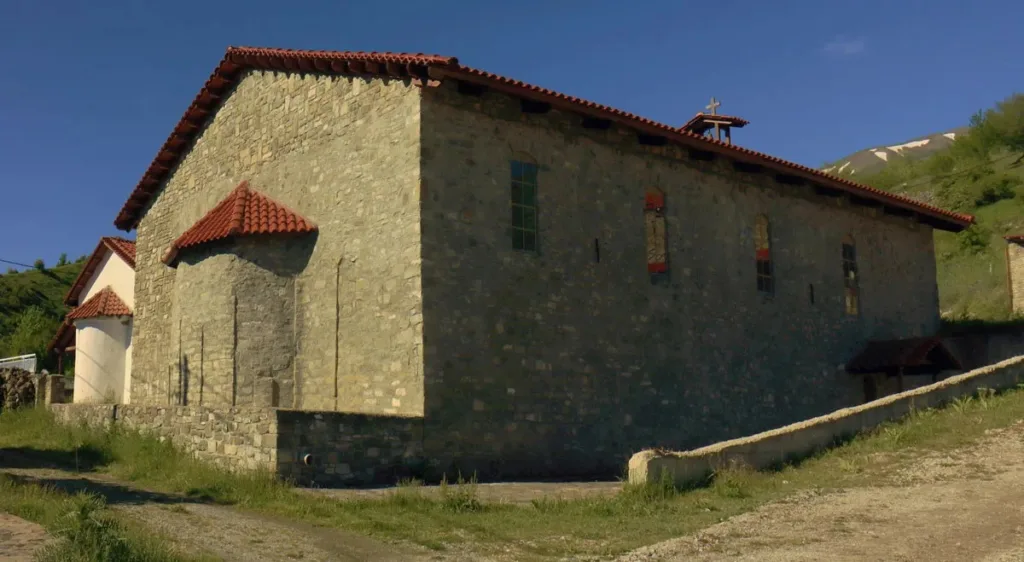
The church of Panagia Grammosta was built in 1887 on the site of an earlier church that was destroyed in the 19th century.
Known for the icon of Panagia Grammoustiani, the church was distinguished as a place of preservation of the historical icon that had been given as an order to Venetian craftsmen in the 17th century.
It is worth mentioning that Panagia Grammoustiani is considered the patroness of the Vlachs which, according to tradition, followed in the movements of the people in the Macedonian plateaus.
Today, the church is stone-built and has a large niche. Surprisingly, it still stands, even though it was completely destroyed in the dark years of the Civil War until it was restored from its foundations and handed back to the local community.
Yianni Koutroudi is a columnist for Travel. Translated by Paul Antonopoulos.
READ MORE: Kalamata: Exploring the vibrant Peloponnesian city.

